A field guide to Australia’s ultimate beach town.
Byron Bay is not what it used to be. No shade intended: This small town on the north coast of the Australian state of New South Wales has always shifted with the times, and that’s no less true now. Byron Bay is known as an epicenter of Australia’s counter-culture, a coastal idyll cradled by an ancient caldera, where hippies live alongside surfers and locals stopped McDonald’s from setting up its golden arches. But it wasn’t always this way: before the New Agers unfurled their prayer flags in the 1970s, it had a less romantic reputation as a hub of sand-mining, cedar-cutting, abattoirs, and whaling.
Byron—or the Bay, as locals call it—is evolving again. It’s still a magnet for backpackers and surfers, but these days it also attracts cashed-up visitors, and entrepreneurs who boast about ‘board meetings’ on the water. Byron may have become more crowded and chaotic in the last few years, but its main selling points—a laid-back pace and beautiful beaches—are still just as appealing.

Take the back road. There are two airports that service Byron Bay—the easiest option is to fly into Ballina Byron Gateway Airport (daily flights from Sydney, Melbourne, and Newcastle) and book a transfer to Byron Bay. This will take you via the Coast Road, a scenic, 30-minute intro to the area that winds past windswept beaches, soft tea-tree forests, and cane fields before meandering into town through the lush back door of Broken Head. Alternatively, you’ll find more flight options at Gold Coast Airport, but a longer and less joy-sparking transfer via the freeway. On the upside, if you arrive this way you’ll get to see the famous “Cheer up, slow down, chill out” welcome sign, and the jaunty new silver lighthouse sculpture that resembles a dildo.
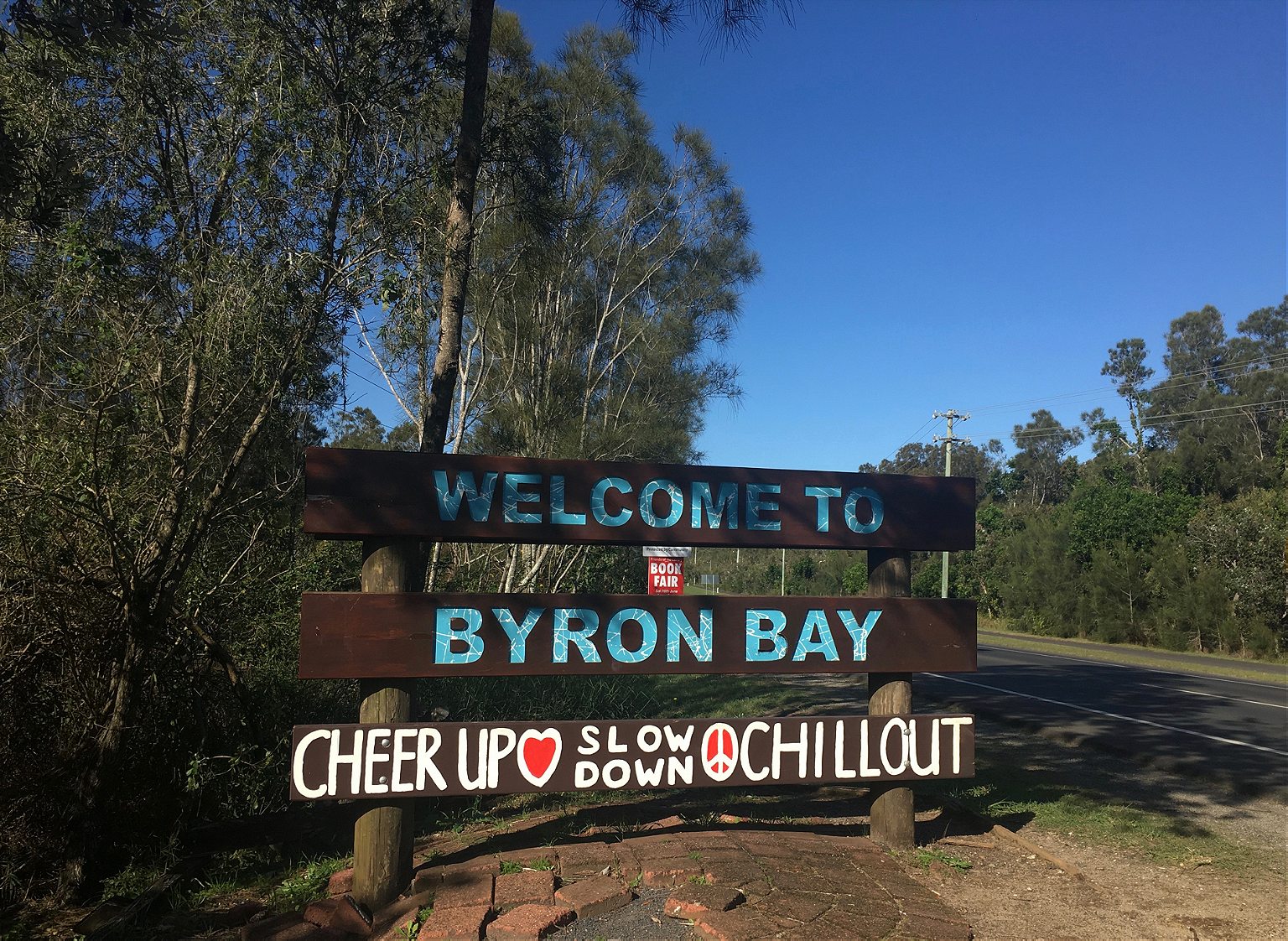

Book ahead… Byron is busy year-round these days, so plan well ahead for accommodation—essential if you’re here for one of the big music festivals: Splendour in the Grass, Bluesfest, or Falls Festival. If you’re on a budget, the recently revamped Byron Bay YHA hostel is a good, cheap, and centrally located option. The Bower’s beach-chic suites and circular pool will rate highly on social media feeds. Also, more than 17 percent of Byron’s housing is listed on holiday rental platforms like Airbnb, so you should have plenty to choose from.
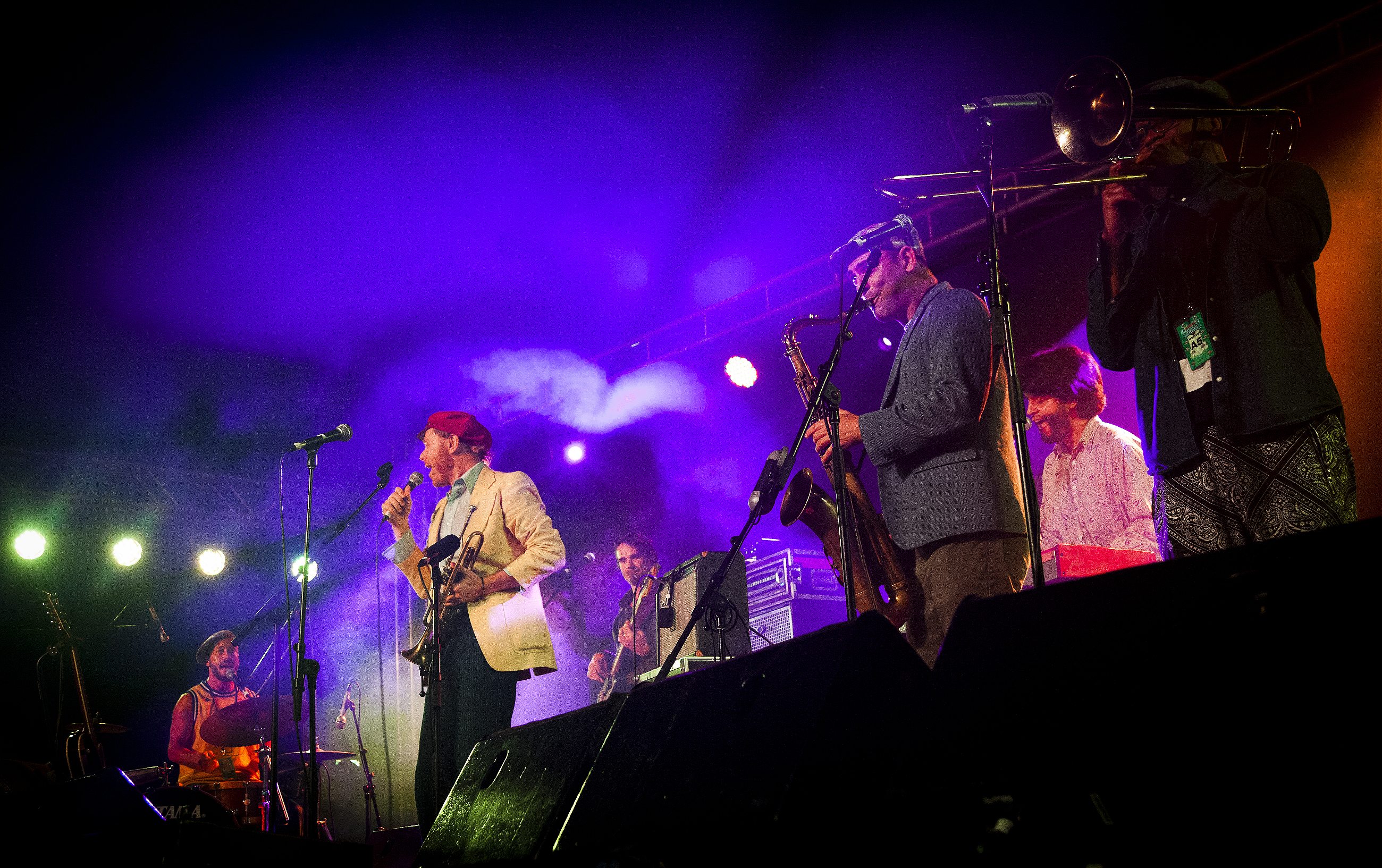

… and check the map. Byron Bay is part of the greater Byron Shire. Byron Bay is small; the Shire is large. So pay close attention when searching for accommodation or you could end up in a satellite suburb rather than in the town itself. Take The Byron at Byron Resort & Spa, for instance—it sounds like it’s in the center of Byron, but it’s actually in the suburb Suffolk Park, a 10-minute drive from town. This isn’t necessarily a bad thing—in fact, it can be a blessing to be able to retreat from the Byron bubble—just something to bear in mind when booking.

Skip summer. Summer has northerly winds, week-long downpours, and throngs of tourists. The best time to visit is during autumn and winter (March to August), when the weather is great, the surf is at its best, and the crowds ease off (a little). From May to October you’ll also be able to spot humpback whales cruising past on their annual migration.

Get up early and walk. It’s worth it to soak up the sunrise from Cape Byron, the most easterly point of Australia. You can save time and drive up to the historic lighthouse (there are limited parking spaces and entry is AUD$8, or US$5.60), but then you’d miss out on the delightful Cape Byron walking track, which winds through rare littoral rainforest, past pristine beaches and across grass-covered cliffs to reach the stately 1901 lighthouse on the headland and sweeping views of the ocean. The full loop is 3.7 km (2.2 miles) and takes around two hours to complete, but don’t be tempted to take the shortcut down the road on the way back—the second half of the track along Tallow Ridge is equally special.
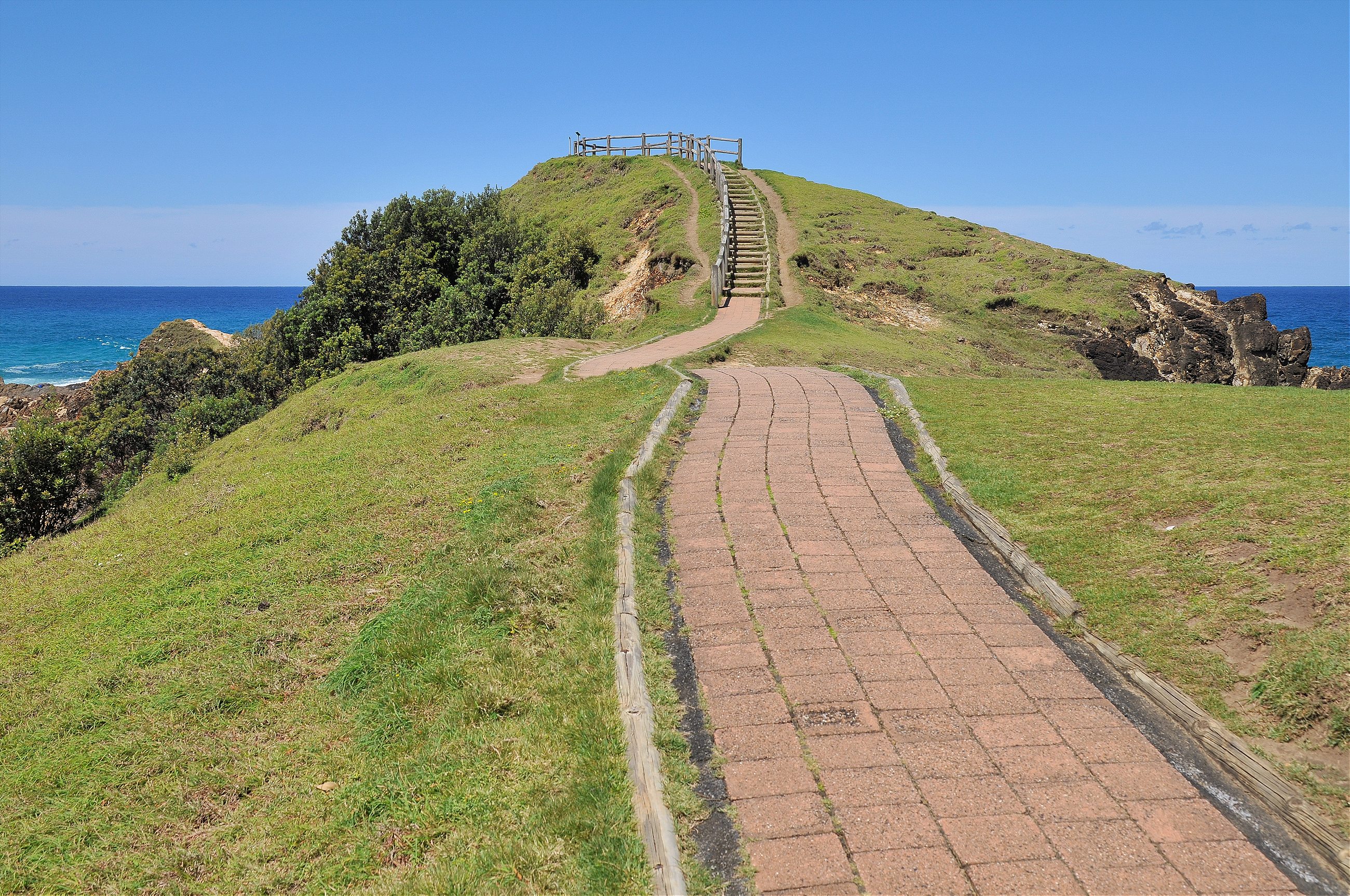

Learn the history of Cavanbah. Cavanbah, the Aboriginal name for Byron Bay, means ‘meeting place’ and visitors often overlook its history as a center of celebration and ceremony. Few know, for example, that the lighthouse is built on a sacred initiation site, or that a 1,000-year-old midden (an ancient garbage heap consisting of shells and tools) exists just behind the popular surf spot The Pass. In a story repeated across Australia, Byron’s indigenous people were persecuted, massacred, and moved off their land after European settlement began. Thanks to a landmark native title agreement, however, the Arakwal National Park was created in 2001 and is managed by Arakwal people alongside the National Parks and Wildlife Service—the first agreement of its kind in Australia. To learn more about Cavanbah and its people, book a Walk and Talk with an Aboriginal Discovery Ranger, look out for the educational signs throughout Cape Byron State Conservation Area and take a moment to explore the Arakwal Room in the Lighthouse Keeper’s Cottage on the headland.
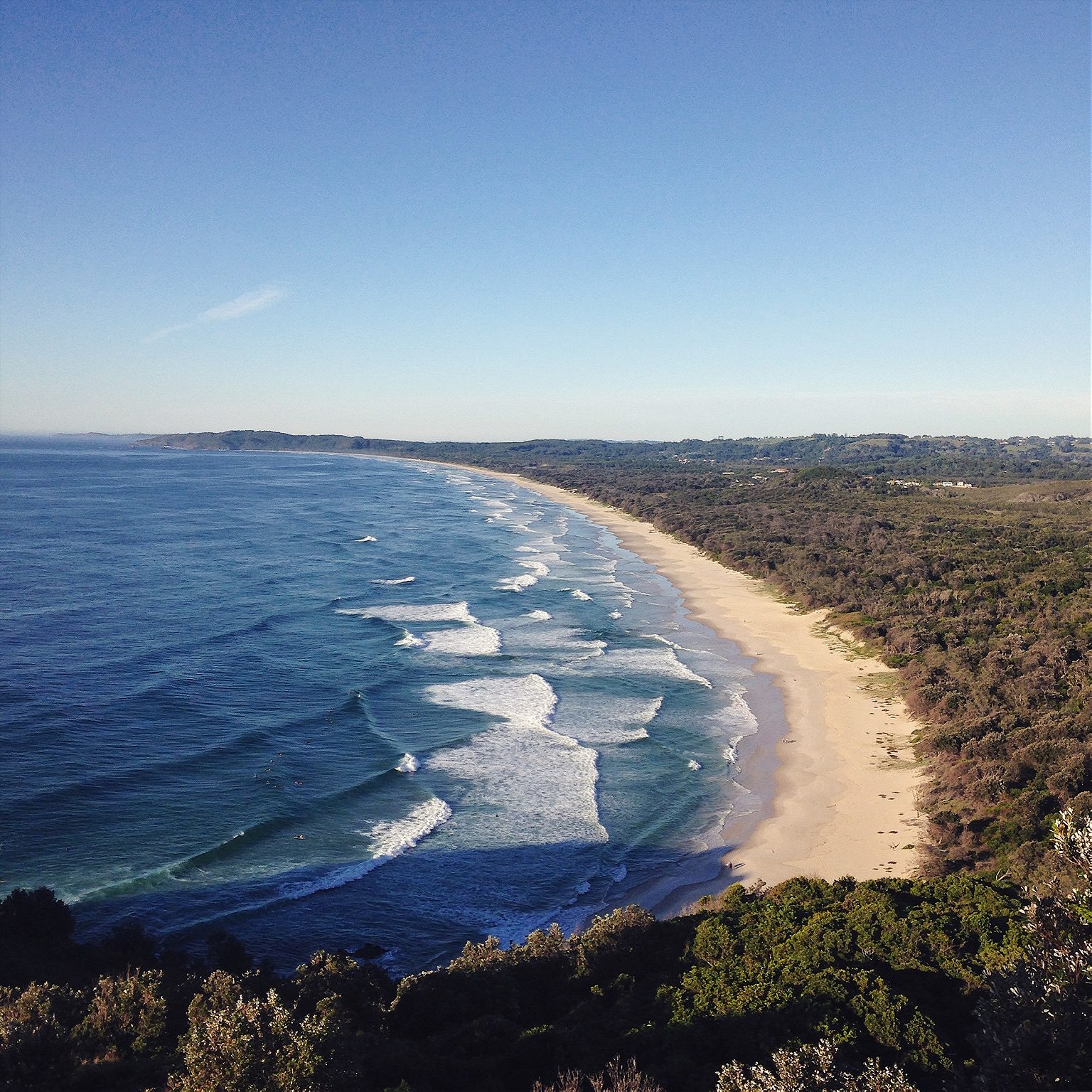


Eat, sleep, beach, repeat. Creamy white sand, glassy turquoise barrels, gently leaning pandanus palms—Byron’s beaches are the star attraction. Start at Main Beach, a patrolled spot good for swimming, and work your way down past Clarkes Beach to the Pass, a peeling surf break perfect for long and short boards, then around the corner to pretty Wategos, beneath the millionaires’ mansions. On the other side of the cape, Tallow Beach is a long and open beach break bordered by coastal heath, and its Cosy Corner below the headland provides shelter when the northerly winds pick up. To the left of Main Beach is Belongil, a slightly quieter stretch of sand with its surf break formed by the wreck of the SS Wollongbar. Bring a board or hire one (around AUD$25, or US$18 per day), take a surf lesson or a sea kayaking tour to spot dolphins and turtles, or simply spread out your towel under the palms.

Drink the Byron booze. You’ll be craving a coldie after a long day in the surf. Order a schooner or a middy—in New South Wales, that’s a 425 ml (14 oz) or 285 ml (9 oz) glass—of Stone & Wood Pacific Ale, a light and fruity beer made just down the road in the Arts & Industry Estate. If you like it, swing by their brand new brewery for a tour and a ‘tasting paddle’, or make a day of it and take in the nearby Byron Bay Brewery as well—a good indoor option if rain has messed with your beach plans. If spirits are more your thing, head into the hills to Cape Byron Distillery, where their gins and macadamia nut liqueur are flavoured with ingredients foraged from the family-owned company’s regenerated rainforest. A tour of the distillery starts with a wander through the forest to taste native ingredients such as Davidson plum, and finishes with a cool cocktail overlooking the macadamia orchard.
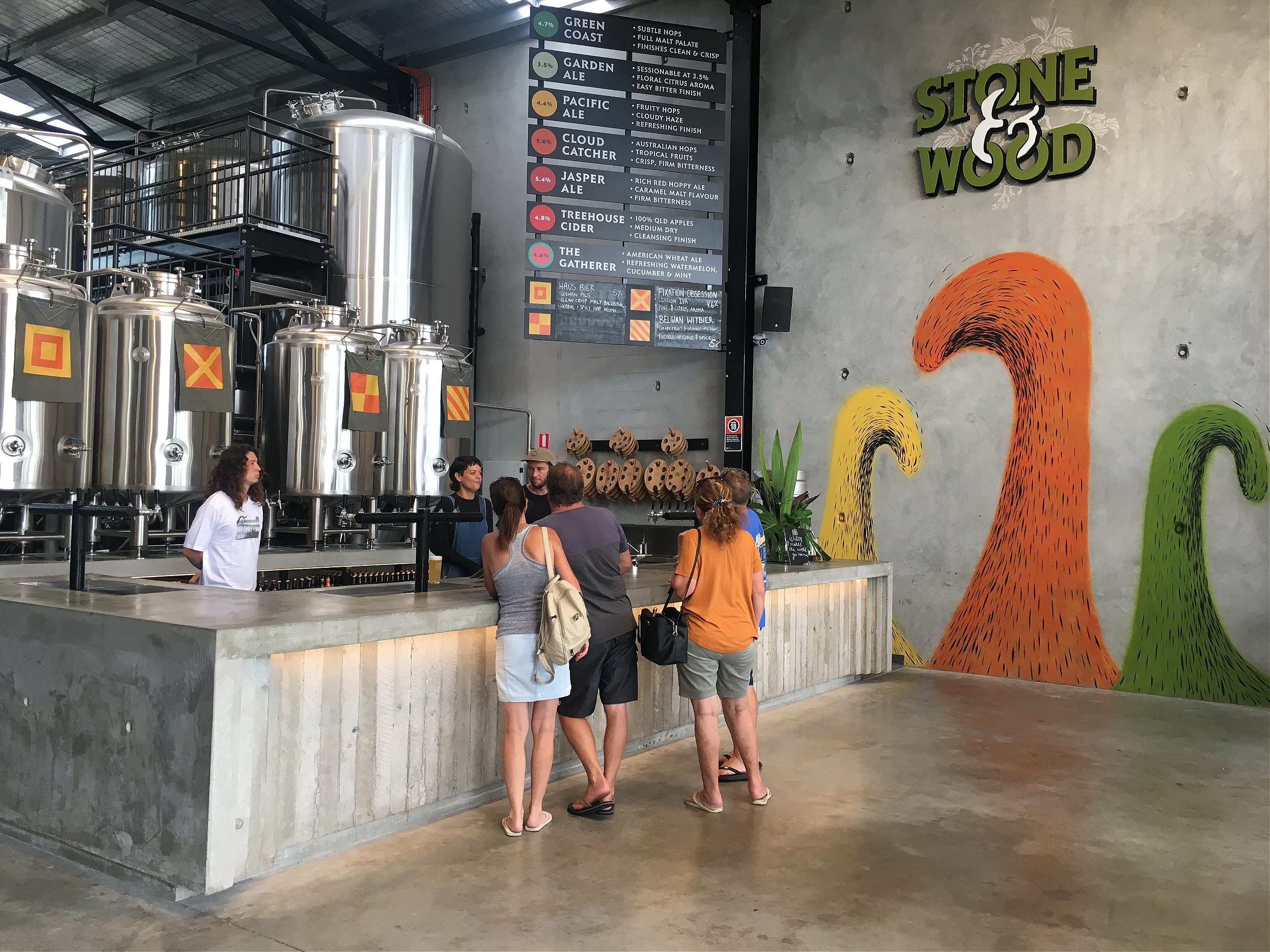

Adjust your schedule. Aim early in everything you do here—many cafes are resolutely shut by 2 p.m., and restaurant kitchens start to close around 10 p.m. You’ll find a handful of venues open until the early hours, but bar hop at your own risk. If you’re wandering around the streets late looking for fun, you could find yourself a victim of the lockout, where complying venues refuse entry after 2 a.m., part of a voluntary agreement aimed at reducing alcohol-related violence in the area.

Be prepared to wait. In traffic, in the surf, for brunch. Did I mention this town gets busy? Go with the flow, settle in, and enjoy the people-watching.

Get on your bike… Traffic chokes Byron’s streets daily, and there are parking meters everywhere, at a steep AUD$4 (US$2.80) an hour. Cruising around on a bike is far less stressful. Some hotels provide them for free, or you can hire them cheaply (around AUD$20 per day), and bike paths make it easy to explore.

…but escape with a car. If you have the budget to hire a car for a day or two, it’s worth it—you can visit pretty hinterland villages such as Bangalow, Newrybar, Mullumbimby, and Federal, which each have their own unique personality, or drive out to Nimbin, the area’s self-proclaimed alternative lifestyle capital, to visit the Hemp Embassy and explore Protestors Falls, a pristine pocket of rainforest saved from the logging industry. If you’re patient (and brave!), hitchhiking is still common in Byron. Bum a ride at your own risk.
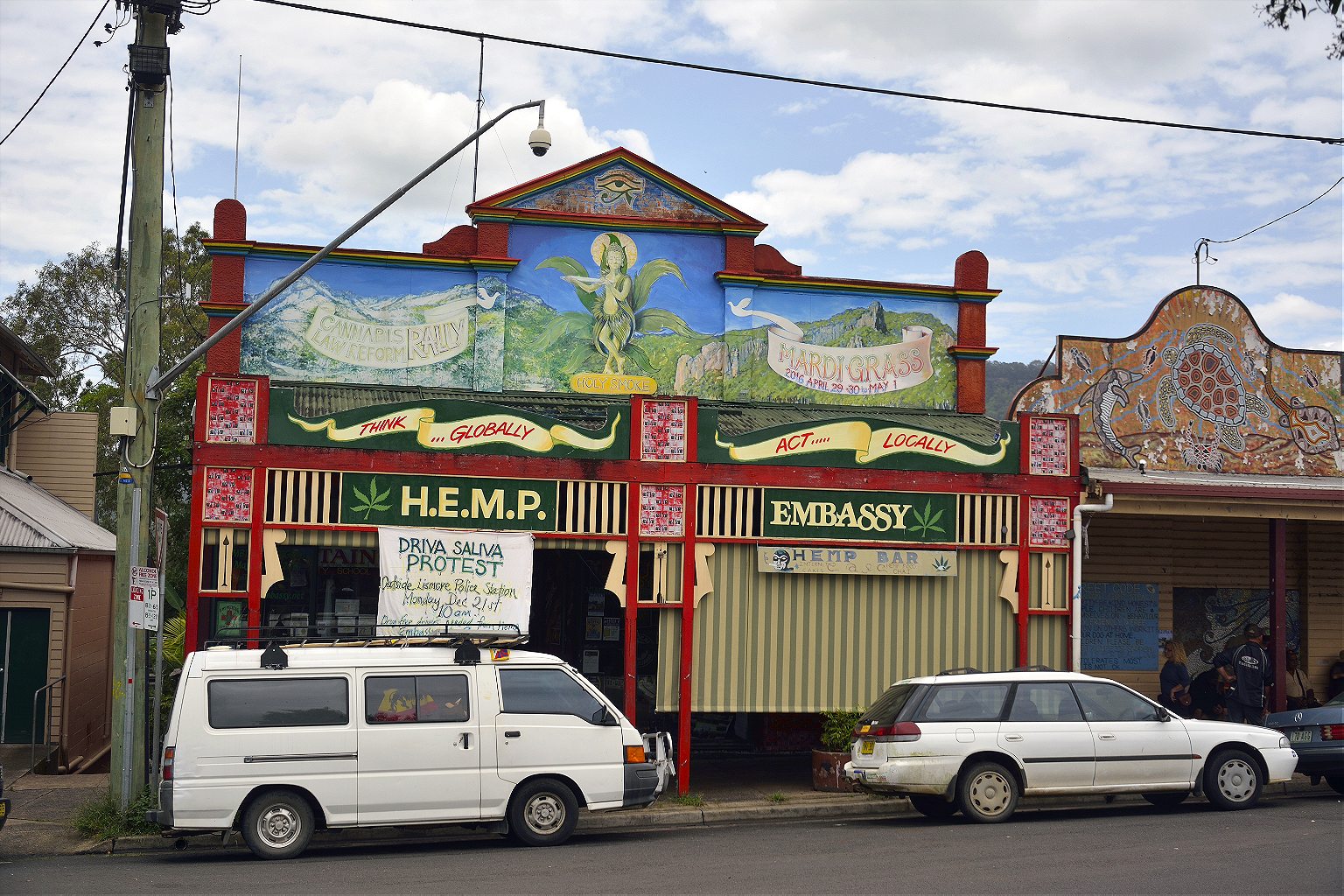


Wear what you feel. There might be more famous faces and stylish surfers around these days, but Byron is still a place to explore and express who you are (or who you want to be), so bring your most colorful outfits and an open mind. The unofficial dress code is anything from Spell & The Gypsy Collective, a local label made good.


Eat like a local. This could mean anything from nabbing the free falafels Lebanese restaurant Orgasmic Food uses to lure hungry tourists on Jonson Street, to slurping AUS$1.50 (US$1) oysters during Balcony Bar’s weekly happy hour. But it really boils down to embracing the outstanding local produce, a result of the rich volcanic soils and subtropical climate. Menus read like a Who’s Who of Byron Shire farms, and the weekly farmer’s market on Thursday mornings is so popular it regularly causes a traffic jam. Locals and visitors alike descend on Butler Street Reserve to do their weekly shop, picking up milk from Nimbin Valley Dairy, Coopers Shoot tomatoes, and Bangalow pork direct from the supplier. If you miss the market, drive around the hinterland and you’ll spot makeshift farm stalls by the roadside, stocked with eggs, herbs, honey, and whatever fruit and veggies are available. Take what you need and leave your cash in the ‘honesty box’ attached.

Head to the car park at sunset. This grungy spot overlooking Main and Belongil beaches is where you’ll find a drumming circle most evenings (if that’s your thing) when the weather’s fine. It’s inclusive: slip off your thongs (flip-flops) and dance.

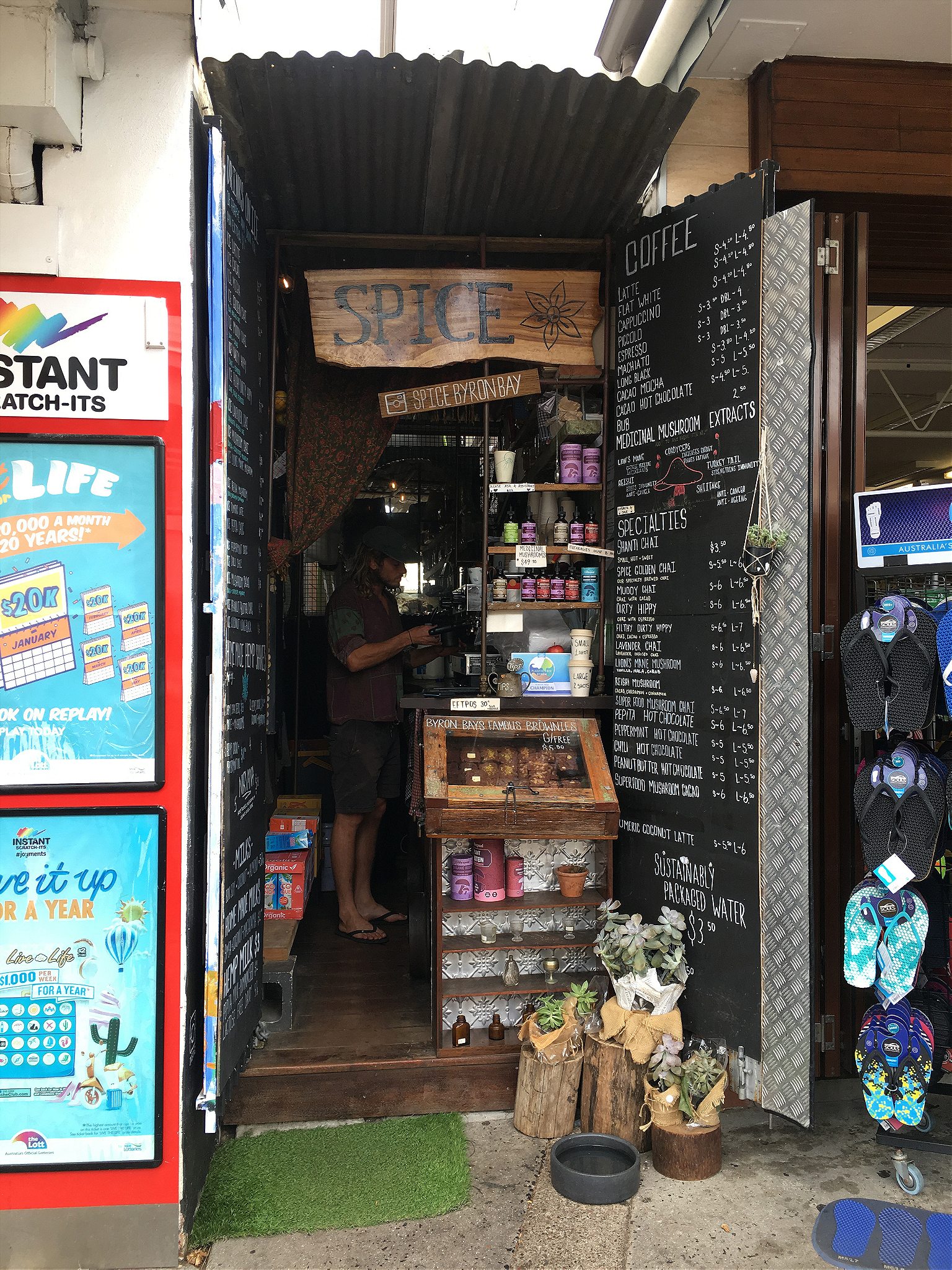
Drink mushrooms. Like everywhere in Australia, coffee is treated with utmost respect here, and there’s even a handful of local coffee growers and roasters in the region. But, this is also Australia’s wellness capital, so it’s the perfect place to shake up your order with medicinal mushroom-spiked brews and house-made nut milks. Spice, tucked between a souvenir shop and a convenience store on the busiest stretch of Byron’s main drag, is more of a cupboard than a café, but it offers a huge menu of weird and wonderful concoctions, from a reishi mushroom blend with cacao, cardamom and cinnamon, to milk made from pepitas. Don’t worry, you can get a straight-up latte too.

Eat Mexican food. It’ll be hard not to: Mexican is fast overtaking Japanese as the international cuisine of choice in Byron. Thanks to ocean currents that echo the Mexican Gulf Stream and local growers cultivating excellent produce, Byron is perfectly positioned to dish up Mexican flavors. Score cheap, zingy tacos at hole-in-the-wall Chihuahua in Feros Arcade, washed down with a beer from the bottle shop (liquor store) next door, or head to Chupacabra in Suffolk Park for ceviche, slow-cooked pork, house-made tortillas, and mezcal.
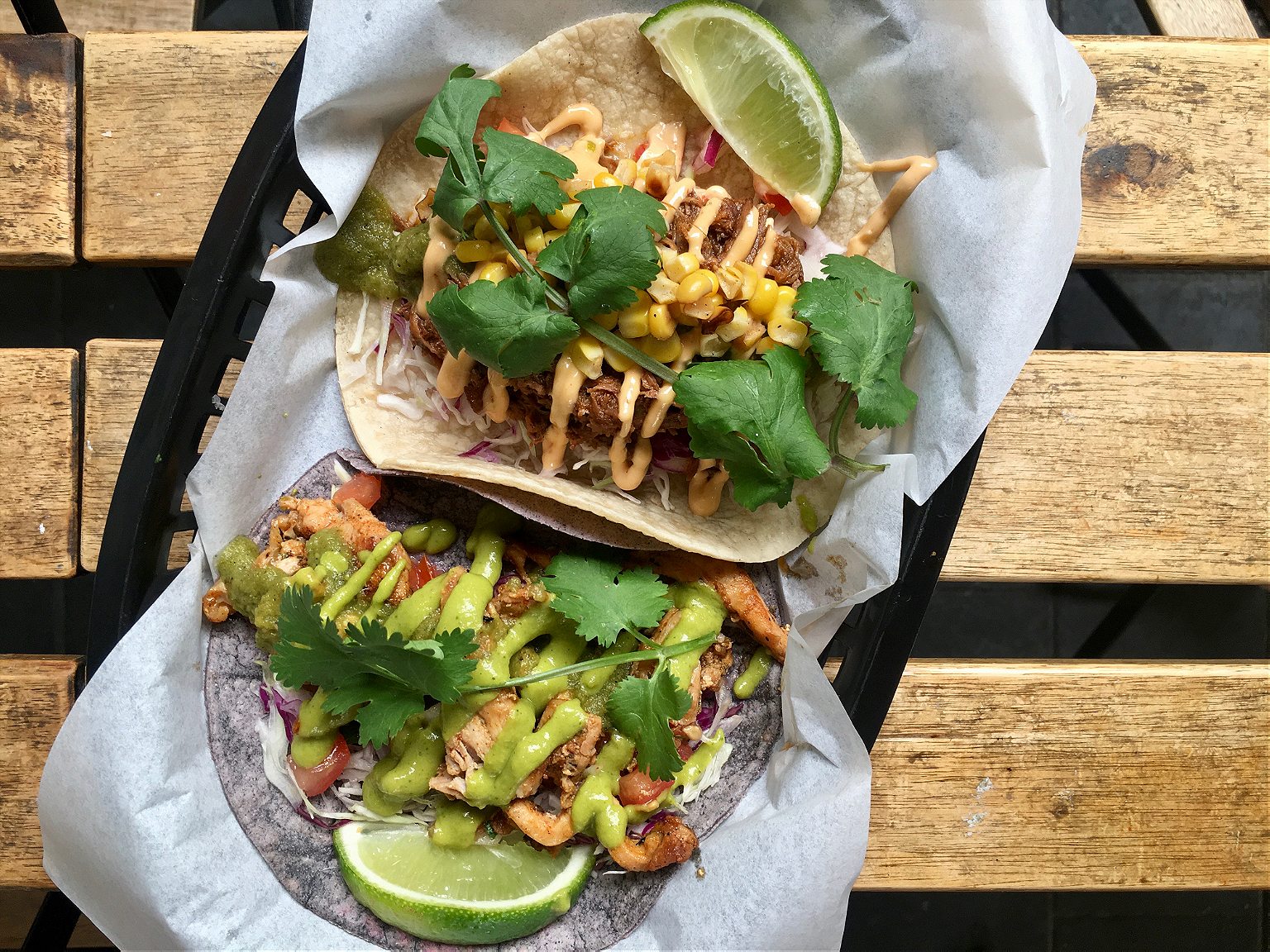

Don’t get creative with parking. It’s tempting, especially when space is at a premium and the beach is beckoning. But, trust me: rangers will find you and fine you, even if you’re hidden away down an unsealed road in a national park and your only crime is parking against the flow of traffic. (Yep, been there.) Ditto for illegal camping and littering (even pouring out a cup of coffee could cop you a hefty fine). Australian authorities are notoriously ticket-happy, especially in jam-packed tourist hubs like Byron, where revenue is needed to support the over-burdened infrastructure, so don’t make the mistake of thinking you’ll get away with a few hours in that no-stopping zone.
Follow the music. From buskers holding impromptu concerts in alleyways to big-name acts, Byron’s music scene punches above its small-town weight. Where to soak it up all depends on your tastes—you’ll find folk singers busking at Main Beach during the day or on Jonson Street corners in the evenings, a regular rotation of touring Australian and international rock bands at The Northern Hotel, and free, rollicking shows by mostly local acts every night of the week at The Railway Friendly Bar (aka The Rails). The Beach Hotel (the Top Pub or The Beachy in the local vernacular), a sprawling venue overlooking the bay and originally built by Paul Hogan (Crocodile Dundee) and his sidekick John Cornell, has a regular reggae night on Mondays, plus cover bands, DJs, and the odd 1990s nostalgia gig. Pick up the local free magazine The Byron Bazaar for a gig guide.

Treat yourself. Some of the best restaurants in Australia are clustered in and around Byron Bay, thanks to rock-star chefs chasing the ultimate work/surf lifestyle. You’ll need to book at least three months in advance for the headline act, the tiny, 14-seat Noma-esque Fleet in Brunswick Heads, but others, such as modern Spanish restaurant St Elmo, Raes Dining Room at the swish Raes on Wategos hotel, and Harvest Newrybar, which hosts a weekly wild harvest night with a menu created around foraged native ingredients, are easier to get into, and worth the spend.
- Strike up a convo with a local. At the markets, in the pub, doing the lighthouse walk—many will lament that their town is overrun with tourists, before giving you directions to their favorite café, preferred healer, and secret waterfall.

Find the next big thing. The Arts & Industry Estate in west Byron has independent fashion labels, vintage boutiques, co-working spaces, yoga studios, smoothie bars, surf shops, and homewares stores. It’s not flash, but its ramshackle appearance belies the creativity in the mechanic workshops and warehouses. Skip the boutiques in town and do your shopping here (ideally on a weekday; it’s a ghost town on the weekends). You can get there via the solar-powered train from the center, or by bike.

Embrace the lifestyle. Local legend says that the bedrock of Byron Bay is threaded with obsidian crystal, and it sits at the center of several ley lines, giving it a special energy. Also, that it’s a transient place that attracts people who need healing, that women outnumber men here because of its divine feminine energies… You can take all that with a grain of Himalayan rock salt, but you’ll have more fun if you lean into it. Consult a psychic at The Medicine Wheel, take a yoga class, buy a crystal, and discuss the merits of meditation.








